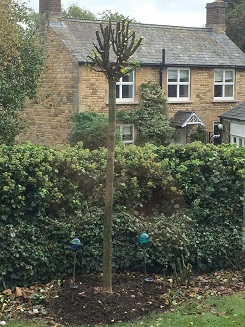Hibiscus are prized for their large blooms. In the UK, they come mainly as hardy outdoor types (e.g., Rose of Sharon). Pruning helps shape the plant and encourages new growth. In general, hibiscus flower on new wood, so cutting back old growth in spring or after flowering stimulates fresh shoots and more blooms.
Best Time to Prune Hibiscus
- Late winter / early spring (before new growth): The ideal pruning time for most hibiscus is late winter or very early spring (February–March), once the worst frosts have passed. Pruning at this time gives the plant time to produce new buds and branches for summer flowering. If a late frost is forecast, delay until it warms a little.
- After flowering (late summer/autumn): Some hardy perennials (e.g., moscheutos) can also be lightly cut back after their flowering finishes in late summer, but this must be no later than October to avoid frost damage to fresh cuts. Rose of Sharon (H. syriacus) and hardy summer hibiscus generally bloom in mid/late summer, so a light shaping prune in autumn is possible but not essential.
Pruning to Encourage More Flowers
Regular pruning encourages a bushier plant and more blooms, since hibiscus bloom on new growth. Here are the key steps for spring pruning:
- Cut back leggy stems: Trim shoots by about ⅓–½ of their length, cutting just above a healthy leaf node (bud). This forces the plant to branch out. For example, shorten each flowering stem to leave 2–3 nodes above the cut.
- Remove dead or weak wood: Cut out any brown, dead, or diseased stems down to healthy wood (or to the base for hardy types). Removing this wood frees energy for new shoots. Deadhead spent flowers throughout the summer to tidy the plant and encourage more buds.
- Shape as needed: If the plant is very tall or uneven, selectively prune longer side branches so the plant is more compact. But avoid removing more than about one-third of the plant at a time in one go.
Pruning back hibiscus stems will produce new shoots and more flowers next season. By cutting just above leaf nodes, each pruned branch can sprout two or more flowering shoots.
Winter Pruning – Yes or No?
Avoid major pruning in mid-winter. Frost can harm fresh cuts, so it’s best to wait until late winter or spring. Leaving hardy hibiscus stems standing through winter even provides some crown protection.
Instead, address hibiscus pruning in late winter/early spring when frost risk has passed. This ensures cuts heal as new growth kicks in.
Tools for Hibiscus Pruning
You don’t need fancy tools – a few basics will do:
- Sharp secateurs (hand pruners): A clean, sharp pair of bypass pruners is ideal for most cuts. This is usually all you need for pruning hibiscus. Make slanted cuts just above a node for fastest healing.
- Gardening gloves: Hibiscus stems can have rough bark or thorns (some syriacus have spines), so gloves protect your hands. Gloves also keep cuts free of sap.
- Disinfectant: It’s good practice to clean the blades before you begin. Wipe pruners with alcohol or a mild bleach solution to keep them in top condition and avoid spreading sap between cuts.
Only remove what you can cut cleanly. Before starting, clean the blades and plan your cuts so you’re not ripping or tearing stems.
If you need specific advice about your Hibiscus or other garden trees, contact our team for further information – we are happy to help!

